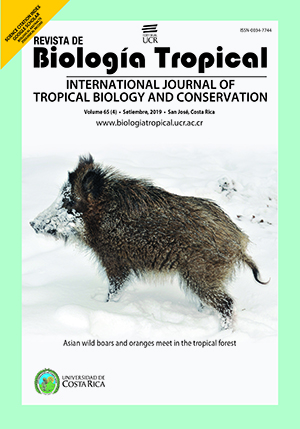Abstract
Snake venom are widely used as laboratory tools for studies of physiological, pharmacological and toxicological mechanisms. Venoms used here are rich sources of several classes of proteases that act on factors of the coagulation cascade, fibrinogenolysis and fibrinolysis, altering the hemostatic processes, and phospholipases A2 which are involved mainly in inflammatory and clotting processes since they act hydrolyzing membrane phospholipids and may result in the release of arachidonic acid whose structure is a precursor of eicosanoids by cyclooxygenase and lipoxygenase pathways. Natural products such as essential oils are made up of active ingredients with wide application in the food, pharmaceutical and cosmetic industries. Thus, in this study evaluate the essential oils from Mentha viridis and Mentha pulegium on coagulation, fibrinogenolysis and degradation of azocasein, induced by Bothrops sp and Lachesis muta muta venoms. These oils were achieved by hydrodistillation and presented, respectively, as the main constituents linalool (40.70%), carvone (13.52%) and α-terpinene (8.56%); pulegone (50.01%), menthol (31.90%) and menthone (16.56%). The essential oils were previously incubated with Bothrops alternatus venom, for two different times, plasma was added and timing. The M. pulegium and M. viridis oils in the volume of 0.30 μL (10 min of incubation) presented greater anticlotting potential. Meanwhile, 0.15 μL the M. pulegium oil presented proclotting activity. In 20 min of incubation, both oils presented anticlotting activity with 0.15 and 0.30 μL. At azocaseinolytic assay the oil from M. pulegium reduced the activity for all evaluated venoms. The highest inhibitions were 34.33% and 39.99% for 0.6 and 1.2 μL of oil, respectively; on activity induced by B. jararacussu, M. viridis with 0.6 and 1.2 μL reduced the activity in 40.93% and 57.72%, respectively. On B. moojeni, the same volumes were responsible for inhibitions of 74.67% and 47.4%, respectively. The fibrinogenolysis induced by B. moojeni venom was totally inhibited by both oils in the evaluated proportions. The results show the presence in oils of protease inhibitors, considering metalloproteases (mainly with thrombin-like and hemorrhagic activity) and serineproteases (actuating on clotting factors), as well as phospholipase A2 inhibitors (involved in inflammation and clotting processes) of wide application in medical and biotechnology areas.
##plugins.facebook.comentarios##

This work is licensed under a Creative Commons Attribution 4.0 International License.
Copyright (c) 2019 Silvana Marcussi, Lucilene Fernandes Silva, Mariana Aparecida Braga, Mariana Araújo Espósito, Pedro Henrique Souza Cesar






